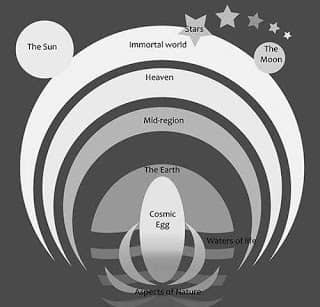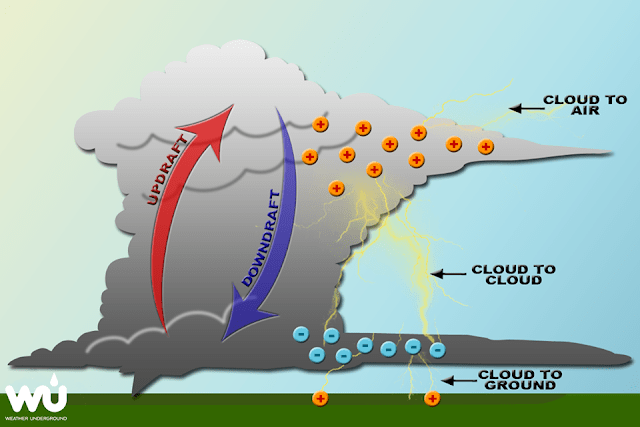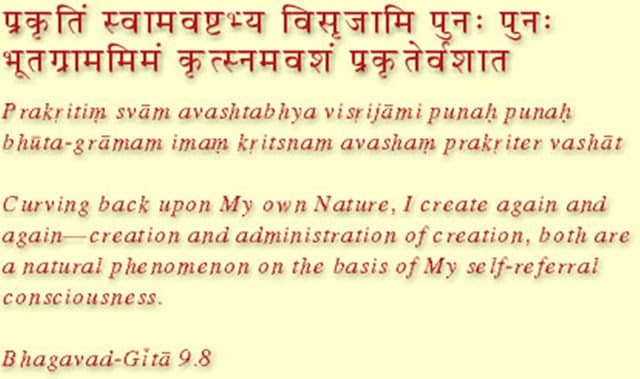Science of Vedas and Mundane Astrological Principals: Understanding Mechanism of Clouds formations, thundering and Electrostatic charge production based on the Principals of Vedas and Vedic Metrology science
 |
| Cosmological structure of prakarti |
lets move forward and try to look into deeper prospects via modern science terminologies : according to wiki “Nature, in the broadest sense, is the natural, physical, or material world or universe. “Nature” can refer to the phenomena of the physical world, and also to life in general.The word nature is derived from the Latin word natura, or “essential qualities, innate disposition”, and in ancient times, literally meant “birth”.Natura is a Latin translation of the Greek word physics (φύσις), which originally related to the intrinsic characteristics that plants, animals, and other features of the world develop of their own accord. The concept of nature as a whole, the physical universe, is one of several expansions of the original notion; it began with certain core applications of the word φύσις by pre-Socratic philosophers, and has steadily gained currency ever since. This usage continued during the advent of modern scientific method in the last several centuries.”
” According to one indigenous theory established in the Upanishads, the universe consists of five basic elements³viz.,1. earth or land, 2. water, 3. light or lustre, 4. air, and 5. ether. The nature has maintained a status of balance between and among these constituents or elements and living creatures. A disturbance in percentage of any constituent of the environment beyond certain limits
disturbs the natural balance and any change in the natural balance causes lots of problems to the living creatures in the universe. Different constituents of the environment exist with set relationships with one another. The relation of human being with environment is very natural as he cannot live without it. From the very beginning of creation he wants to know about it for self protection and benefit.”
According to Vedic Principals, world consists of Agni i.e., fire or heat and Soma (Varun) i.e. water, 12 forms of Sun (Surya – aditya ) and is the soul of all for those are being and for those who aren’t living being. Nature controls by Indra who is most powerful god and who kills Vritra, the symbol of cloud to free waters. Vritra means one who covers and is derived from the root vri, to cover. According to R.R.M. Roy the main force of expansion in the Vedic cosmology is Indra, and his chief adversary, the main force of contraction, is Vritra and Maruts are Indra’s associates. Vedic seers pray boldly to these natural forces and aspects for bestowing plenty and prosperity on them. devi Aditi is praised as Devamata – the mother of all natural energies and she symbolizes the Nature and forms of water is considered as essential to all forms of life.
According to Rig-veda the water (‘APAH’ ) as a part of human environment occurs in five forms:
1. Rain water (Divyah)
2. Natural spring (Sravanti)
3. Wells and canals (Khanitrimah)
4. Lakes (Svayamjah)
5. Rivers (Samudrarthah)
All the 5 elements are merged in Prakrti. According to the Bhagavad Gita, the basic nature of intelligence by which the Universe exists and functions is called prakrti. It is described in Bhagavad Gita as the “primal motive force”. It is the essential consituent of the universe and is at the basis of all the activity of the creation. In sankhya philosophyprakrti is comprised of eight elements: earth, water, fire, air, space, mind, intellect and ego. It is characterized by the three gunas: sattva, rajas and tamas. prakṛti is female while purusa is male.
According to the ancient Vedic science of ayurveda the three gunas — sattva, rajas and tamas — as the pertain to the human physiology are called doshas: kapha, pitta, vata. The balance or imbalance of these doshas defines the prakriti or nature of one’s body.
Let me give you a simple Example how vedic seers observed Factors for Electric charge production in the Clouds during vedic periods:
 |
| Electric charge and Mechanism of Rainfall and Clouds formations based on Vedic Meteorology |
When these Apah set to move violently are called Pravatas (floating clouds). Since the electrical charge is produced in the floating clouds ( Pravatas), vedic seers named as “Pravatonapat”.
” O the Daughter of floating clouds, the electrical charge ! let me salute you and your forms – Hetu/Agneya or Negative charge as well as Vapu/Somiya or positive Charge. We know your residence which are Apah. Hiding therein. You act as Nucleus for gathering clouds “
Vedic Meterology By Ravi Prakash Arya
Views: 51




